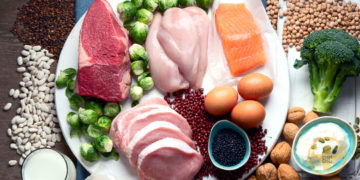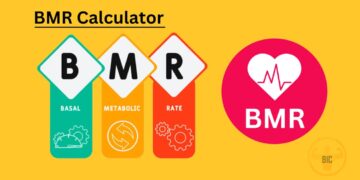KEY TAKEAWAYS:
- Cutting Cycles involve dropping complex carbohydrates down significantly and doing more cardio
- Bulking Cycles involve adding more complex clean carbohydrates and doing more compound exercises geared towards mass.
Introduction
In pursuing a well-sculpted physique, many individuals turn to bulking and cutting cycles. These cycles are strategic approaches to achieving specific fitness goals, whether gaining muscle mass or shedding excess body fat.
This comprehensive guide delves into the intricacies of effective bulking and cutting cycles, providing valuable insights and a roadmap to optimize your fitness journey.
Let’s get started!
Understanding Bulking
What Is Bulking?
Bulking is the phase of a fitness regimen where individuals aim to gain muscle mass and increase overall body size. It involves consuming a surplus of calories to fuel muscle growth.
Setting Bulking Goals
Before embarking on a bulking cycle, it’s essential to establish clear goals. Determine how much muscle mass you want to gain and set a realistic timeline for achieving your objectives.
Nutrition for Bulking
Proper nutrition is paramount during a bulking phase. Consuming a protein-rich diet, complex carbohydrates, and healthy fats would be best.
We’ll explore specific dietary recommendations later in this article.

The Bulking Phase
Bulking Workouts
- Resistance Training: Engaging in strength training exercises is crucial during bulking. Compound movements like squats, deadlifts, and bench presses are highly effective for muscle growth. We recommend a low volume more frequent workouts as laid out in DC Training, Blood and Guts by Dorian Yates, and the Mike Mentzer principals. More on that in a moment.
- Progressive Overload: To continually stimulate muscle growth, progressively increase the weight or resistance in your workouts. This challenges your muscles to adapt and grow. Try to add at least one to two pounds on each exercise on each and every workout. If you are having joint issues or are older, adding reps instead of weight can accomplish the same goal however make pushing your muscle to failure your primary goal.
- Rest and Recovery: Adequate rest is essential for muscle recovery and growth. Ensure you get enough sleep and allow your muscles to recover between workouts.
Nutrition Strategies for Bulking
- Caloric Surplus: Consuming more calories than you burn is the foundation of bulking. Calculate your daily caloric needs and aim for a surplus of 250-500 calories per day.
- Protein Intake: Protein is the building block of muscle. Aim to consume 1.2 to 2.2 grams of protein per kilogram of body weight daily.
- Carbohydrates and Fats: Carbohydrates provide energy for intense workouts, while healthy fats support overall health. Balance your macronutrient intake to suit your needs. We advise in the bulking phase to add 1 to 2 grams per pound of body weight in clean complex carbohydrates.

The Cutting Phase
What Is Cutting?
Cutting is when individuals focus on reducing body fat while maintaining the muscle mass gained during bulking. It involves creating a calorie deficit through diet and exercise.
Setting Cutting Goals
Define your desired body fat percentage and establish a timeline for your cutting cycle. Setting achievable goals will help you stay motivated and on track.
Nutrition for Cutting
During the cutting phase, your diet should prioritize lean proteins, fiber-rich foods, and essential nutrients. Aim for 1.5 to 2 grams of protein per pound of body weight and less than 100 grams of fats and complex carbohydrates. Fibrous carbohydrates however are as much as you want all day long.
Cutting Workouts
- Cardiovascular Training: Incorporate cardio exercises like running, cycling, or HIIT into your routine to boost calorie expenditure and reduce fat loss.
- High-Intensity Interval Training (HIIT): HIIT workouts are efficient for burning fat due to their intense, short bursts of activity followed by brief rest periods.
- Monitor Progress: Keep track of your progress during the cutting phase through measurements, photos, and regular body fat assessments. Adjust your plan as needed to achieve your goals.

Fasted Cardio in the morning/when you wake up before ANY food will yield great results when cutting. Drink plenty of water in the am and if you have coffee it can only be black coffee. Any creamer (or anything with calories) will not be considered fasted cardio.
If you are doing am fasting BCAAs like 5 grams of Lucine is acceptable.
Conclusion
Effective bulking and cutting cycles are a dynamic duo in the fitness world, offering a structured approach to achieving your desired physique.
You can embark on a successful fitness journey by understanding the principles behind these phases, setting clear goals, and following the recommended strategies.
Start working on your dream physique today!
FAQs
- How long should a bulking cycle last? A typical bulking cycle can range from 8 to 16 weeks, depending on your goals and progress.
- Can women benefit from bulking and cutting cycles? Women can use these cycles to achieve their fitness goals, just like men.
- What’s the importance of rest days during bulking and cutting? Rest days are crucial for muscle recovery and preventing overtraining, ensuring optimal results.
- Is it possible to maintain muscle while cutting? Yes, you can preserve muscle mass during the cutting phase with the right nutrition and workout regimen. REMEMBER- Keep you clean protein intake high. DO NOT DROP YOUR PROTEIN THE SAME WAY YOU DO CARBS AND FATS.
- Are supplements necessary for bulking and cutting? While supplements can be beneficial, they are not mandatory. A well-balanced diet should be the foundation of your nutrition plan.
Now that you have a comprehensive understanding of effective bulking and cutting cycles, it’s time to embark on your fitness journey. Remember, consistency and dedication are key to achieving your desired results.
If you want more exercises to add to your routine, supplement tips, or just a go-to source for everything in the fitness world, join our mailing list and keep checking back in for pro level advice at Bodybuilding Inner Circle, the pro bodybuilding blog.













































